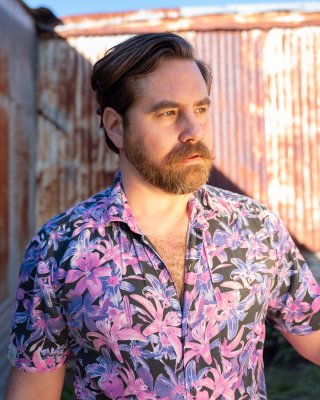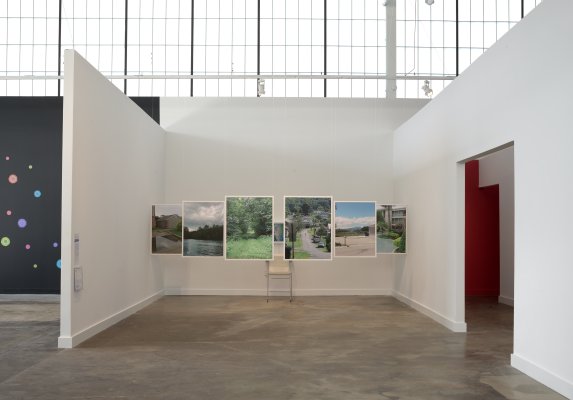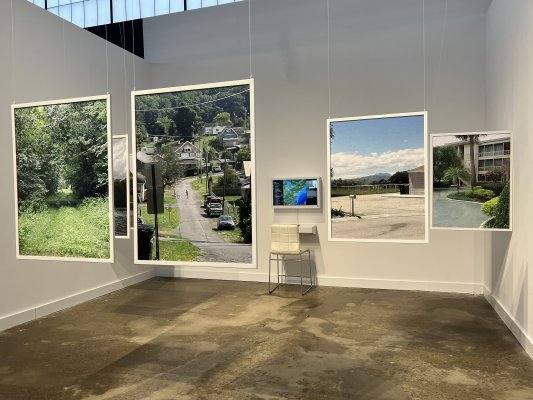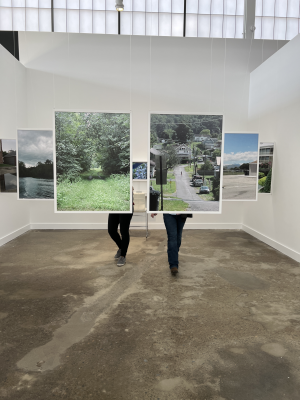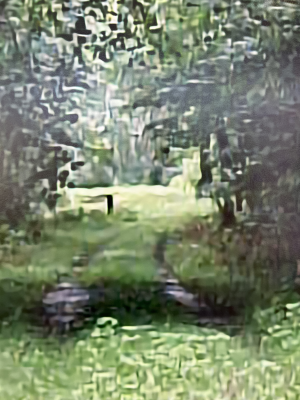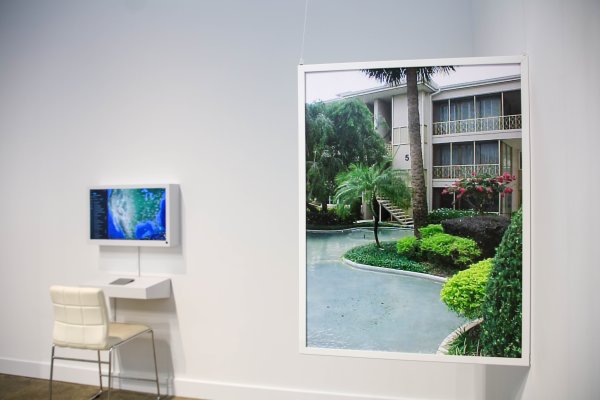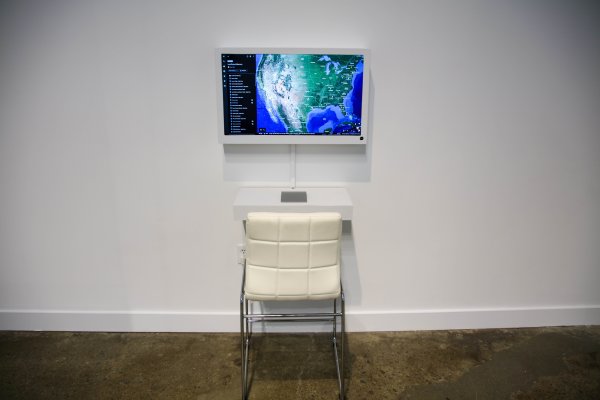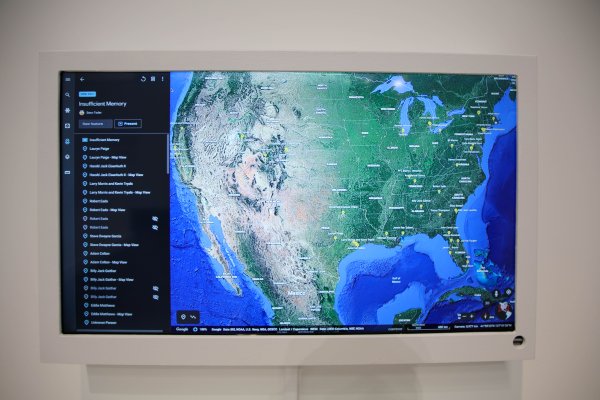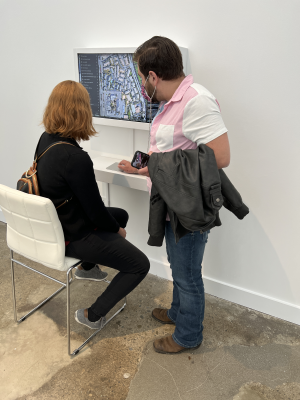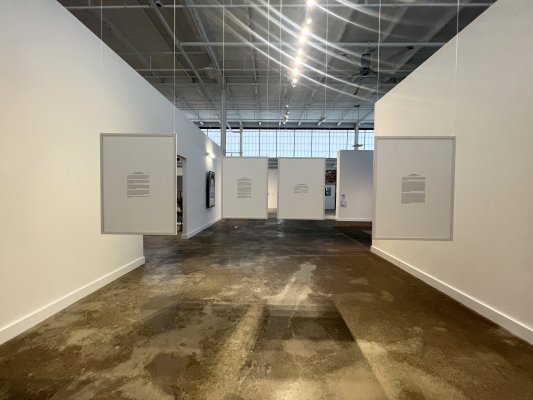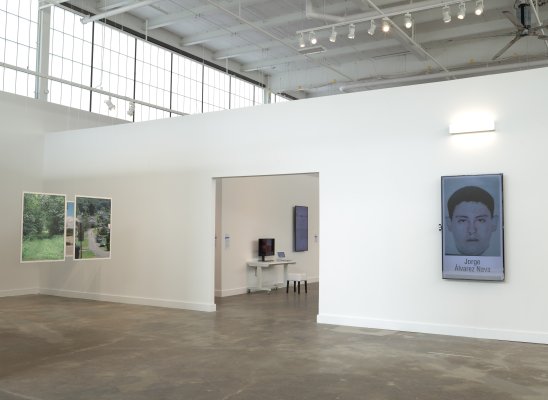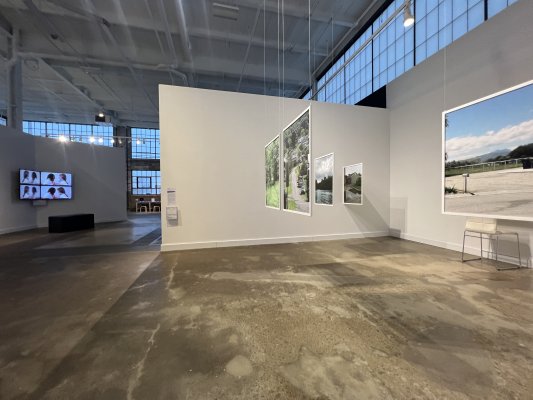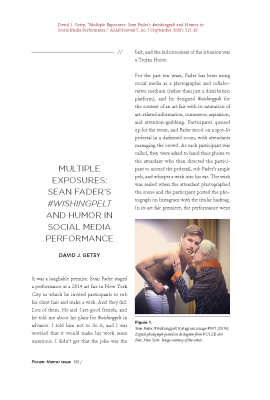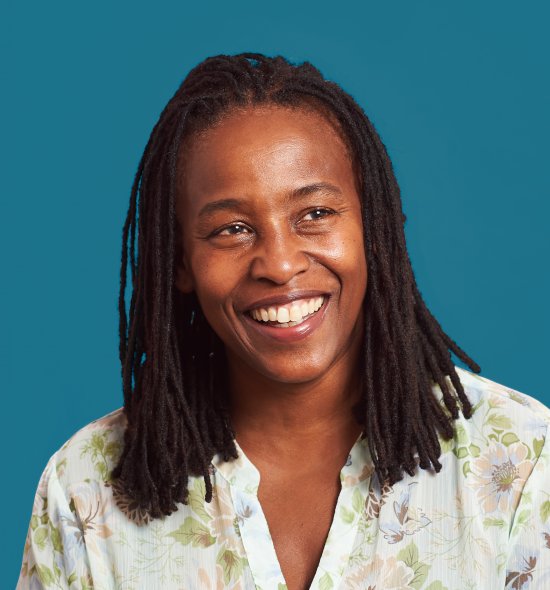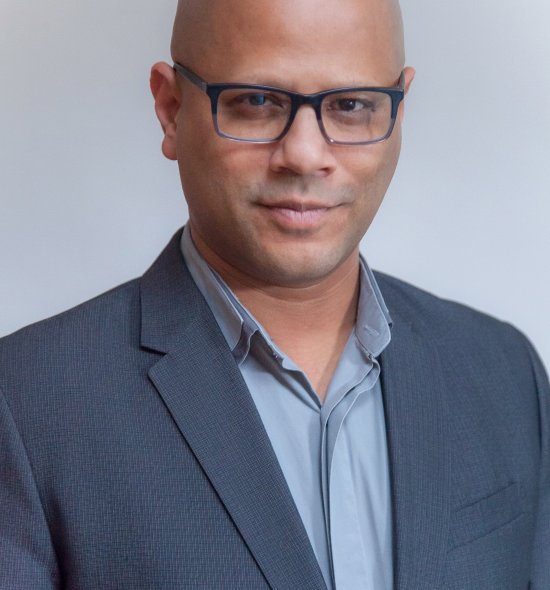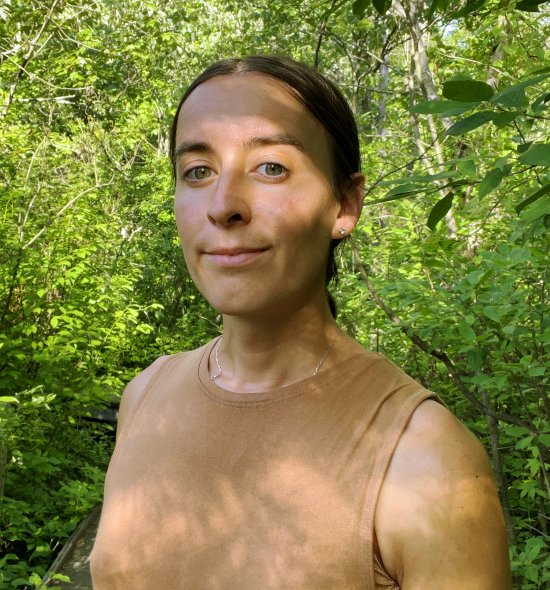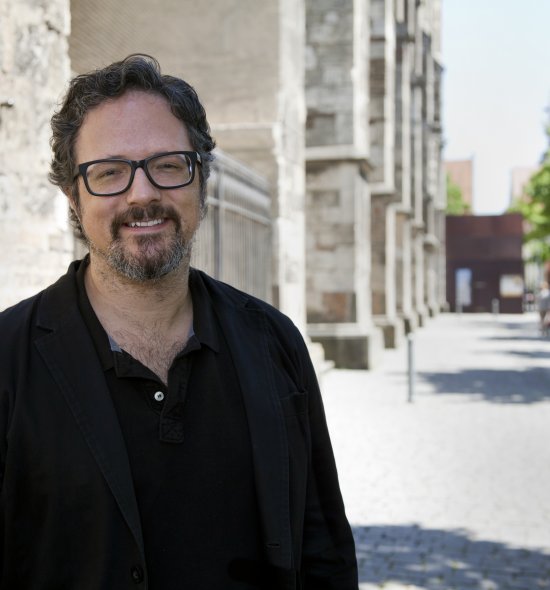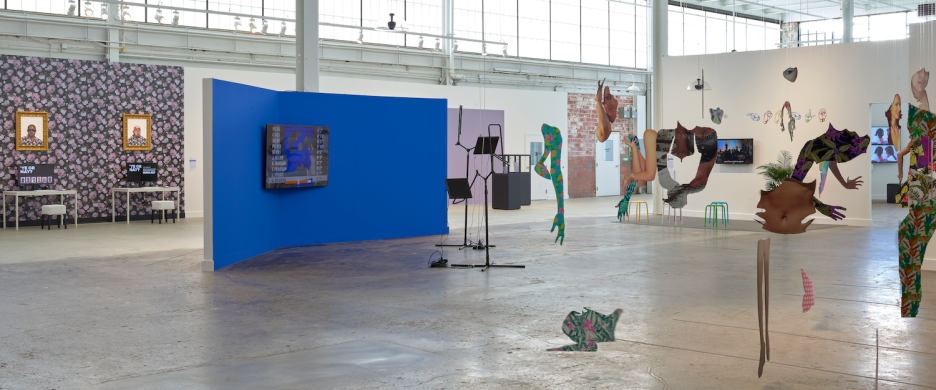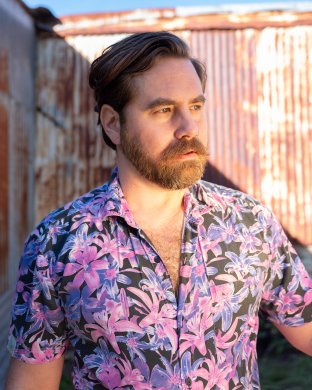Insufficient Memory, 2020
Six hanging archival inkjet prints with corresponding texts; interactive Google Earth database displayed on monitor
Courtesy of the artist and Denny Dimin Gallery
“I hope that people look at this work and they realize how many people we’ve lost in the fight for queer equity, and that visibility for queer people is complicated: visibility is part of equity, but it’s also something that can still get you killed. So we have to continue to fight every day.”
—Sean Fader
In 2018, Sean Fader (he/him/his) began combing through historical archives—including old issues of queer publications, many of which have never been digitized and are therefore hard to find—to compile a database of every LGBTQ+ person who was murdered in a hate crime in the United States while the Hate Crimes Prevention Act was being debated from 1999 to 2000. (The bill was not passed until 2009.) He drove 15,000 miles to photograph the scene of every murder using an old Sony Digital Mavica camera that itself dates to 1998, just before the online sharing of photos on social media began to increase the visibility of queer communities. He then uploaded these photos to Google Earth, along with his short descriptions of each murder. The result is an interactive map that allows you to engage with a digital memorial to LGBTQ+ lives.
The photos are also presented here as enlarged prints that emphasize their inherent low resolution, which becomes a metaphor of the “insufficient memory” of digital systems that erase or exclude the histories of LGBTQ+ people. Shot two decades after the murders, they show only nondescript rural and suburban locations. Their ordinariness speaks to the ordinariness of violence against the queer community, as well as the paradox of visibility, in which leaving the closet to proudly proclaim your identity can make you vulnerable to other forms of oppression, including surveillance and even violence.
The Google Database that is part of this work is freely available for you to experience on your own devices by visiting here.
